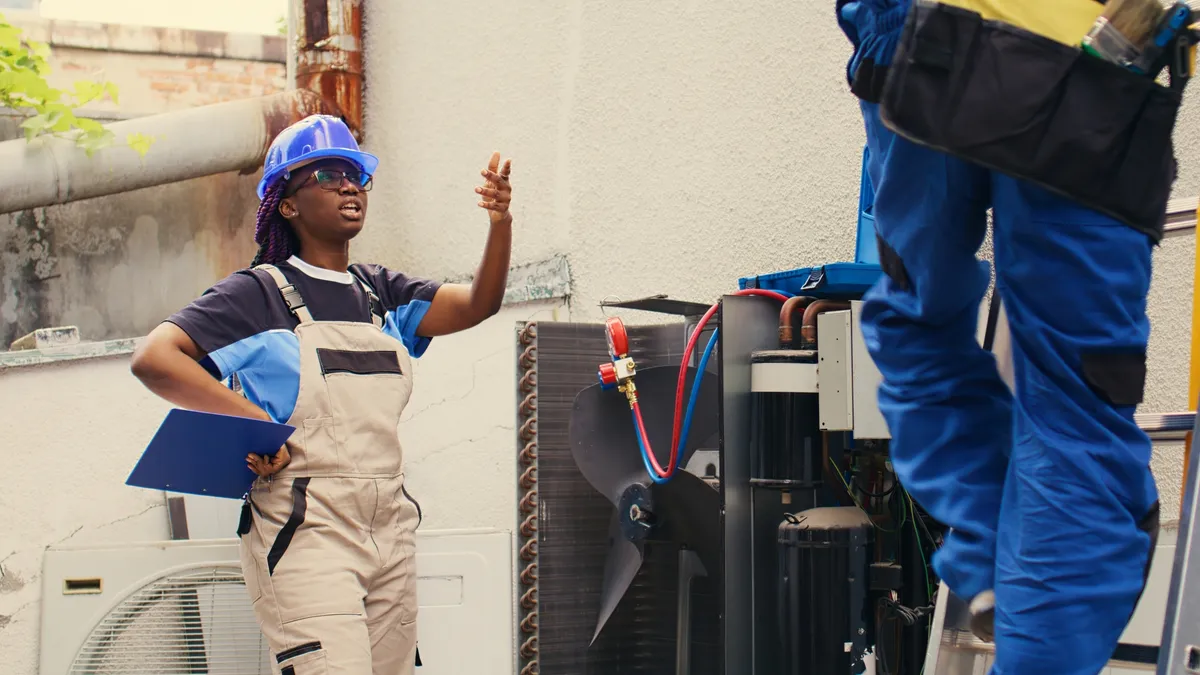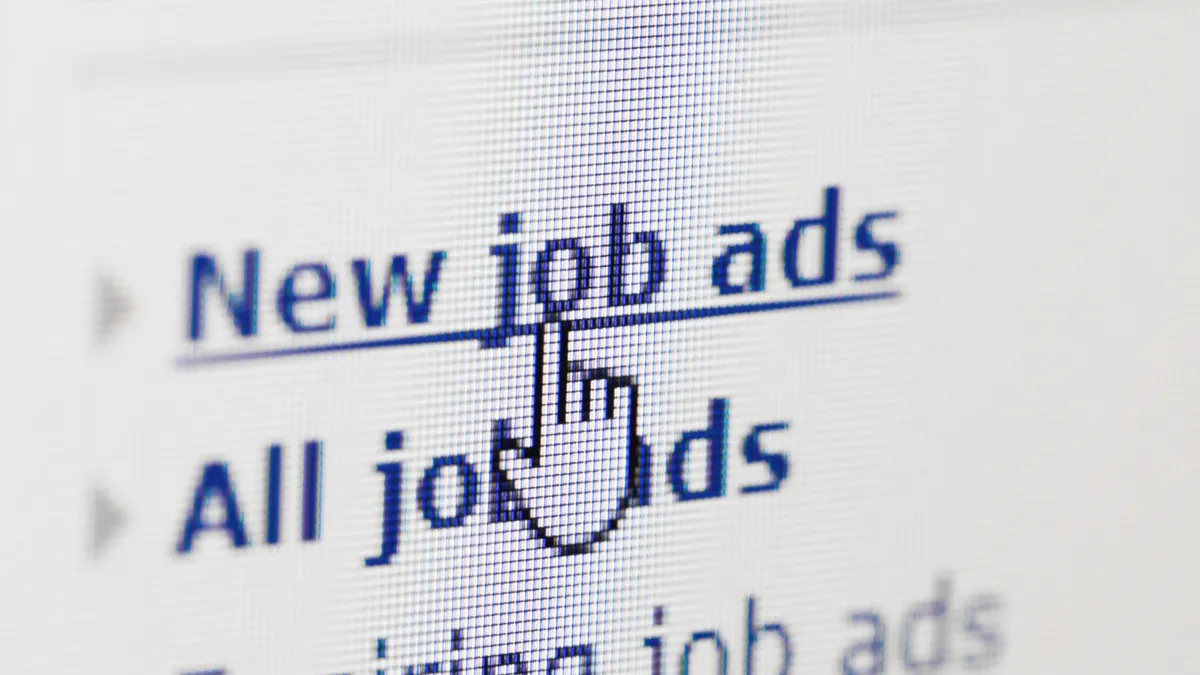CHICAGO — If you’ve ever watched the Jetsons, you remember Rosie the Robot Maid. She cooked. She cleaned. And she existed in a time far, far in the future, where cars flew and children used jet-packs to get to school.
Walking through the aisles of the National Restaurant Show, it appears the future is here. There is Adam, your friendly robot barista, and the peppy-voiced Blue Robot, who wanders the show floor to offer you PepsiCo products.
The growth of robotics since the last NRA show is happening against the backdrop of a tight labor market — and also partially because of it. Takuro Iwamoto, a sales representative for Autec, said demand for its sushi-making robot has boomed since 2020, at one point resulting in a six-month waitlist for the product.
“After the pandemic, there’s a new world right now,” Ajay Sunkara, president and CEO of Nala Robotics, said. “Let’s talk about hygiene. Let’s talk about the labor shortage. Let’s talk about staff not showing up at all because of health issues right now. The best part of [robots] is consistency. You don’t have to do training. It always does the same thing.”
Nala Robotics was one of several robots on the show floor. Check out some of the others that drew crowds.
Nala Robotics
When did the company launch?
More than five years ago.
And just six months ago, Nala Robotics opened its first restaurant in Naperville, Illinois, under the Nala Restaurants Group name. It currently has three fully automated eateries, including One Mean Chicken, Surya Tiffins and Thai 76. All of the restaurants it’s building are operations with just one human person staffing it. All other tasks are completed by robots.
Nala Robotics also offers its technology to QSR chains and independent restaurants.
How does it work?
The current version of Nala Robotics can perform all the jobs of a chef except cleaning and plating, but Sunkara says the next version will include those features. The robot has sensor-processing capabilities that help it detect its surroundings. If a person puts a pepper shaker aside on a counter, for example, it can still recognize the container and grab it.
Once a restaurant operator inputs recipes into the machine’s database, the robot will create the meal the same way each time.
How does it operate within an existing restaurant model?
The robot is modular and can be customized to a restaurant’s layout and calibrated to perform specific tasks without disrupting kitchen staff.
“They’re meant to work with humans next to them,” said Sunkara. “They’re not going to hit a human. They have vision.”
How much employee training is required?
Training is fairly minimal, with most of it focused on how to upload recipes into Nala Robotics and maintain the machine. It requires regular cleaning.
How does it improve labor?
“Let’s look at how technology has saved our lives. Let’s talk about computers. If you look at the late ‘90s, we were all worried computers would steal our jobs,” said Sunkara. “But tech can improve the quality of our lives. That’s what robots are going to do.”
What’s the cost?
Customization drives the price of a Nala Robotics product, but a typical robot with two arms, four burners and four fryers can cost between $150,000 and $180,000. The company offers leasing and direct purchase options.
Current partners
While Sunkara wouldn’t reveal who the company has been talking to, he said to expect some announcements in the upcoming two to three months.
Autec
When did the company launch?
Autec launched as an audio equipment manufacturer in 1962. In the 1980s, the company held an employee contest for potential ideas for a new product. The winner? A toy sushi maker. By 1984, Autec had created its automatic sushi maker.
How does it work?
Autec now offers four types of sushi robots: a maki cutter, which slices up sushi rolls; a rice sheet maker; a nigiri maker that creates rice balls; and a rice mixer to combine sushi rice and seasonings.
A typical workflow to make sushi is making the rice sheet, laying out the ingredients, rolling it, and cutting each roll before a chef plates it. The sushi robots can perform some or all of those tasks, except plating, if a restaurateur opts to purchase each of them. The products work fast — a rice sheet maker, for example, can produce up to 300 rice sheets in 15 minutes. Operators can choose to assign one employee per machine or assign one staff member to control them all.
How does it operate within an existing restaurant model?
The sushi robots can sit on a counter.
How much employee training is required?
Very minimal training is necessary. The company says a chef with zero sushi experience can learn how to use the robots in 15 minutes.
How does it improve labor?
The main purpose of the sushi robots is to improve efficiency and cut down on time spent wrapping rolls and cutting them up. It allows chefs more time to plate and communicate with the customers, as well as work on less repetitive tasks, such as frying salmon skin or strategizing menu options depending on the ingredients of the day.
What’s the cost?
Most restaurants start off with the maki maker, which is $14,000.
Current partners
Kona Grill and grocery store chain H-E-B. Autec’s robots also helped sushi operations at the Super Bowl at Sofi Stadium earlier this year.
Richtech Robotics
When did the company launch?
The China-based company has been in business for around 20 years, but started pushing into the United States with its robots about a year and a half ago. It has Matradee, a food runner, and Adam, a robot barista.
How does it work?
Customers order from a tablet, choosing from a slew of typical coffee options, including type (such as espresso or Americano), different syrup flavors and how much sugar or milk they want.
From there, Adam’s dual-arm system will create the coffee based on presets programmed by the restaurant, such as what “extra” milk means.
Adam has also been tested to pour beer and wine. It can pick up and tilt a cup in one hand and turn the beer tap on with the other. As the beer pours, it straightens up the cup, turns off the tap and then sets it down.
The execution is similar for wine, but it’s on autopour, so Adam picks up a wine glass, puts it under the pourer and fills it up to a designated amount.
How does it operate within an existing restaurant model?
Richtech is still fine-tuning Adam, but the robot would typically stand behind a bar or counter.
Adam is currently only making demo appearances at trade shows and other events.
BellaBot, Lucki, Matradee, Servi Plus, Segway Robotics
There were several iterations of robotic food runners and bussers at the NRA Show, developed by companies including Pudu Robotics, OrionStar, Richtech, Bear Robotics and Segway Robotics.
Despite different appearances, such as cute kitten ears or a chef’s hat, functionality was pretty similar across all of the robots. Each robot could be routed according to a restaurant’s floor plan, moving around using vision sensors to bring food and drinks to tables on tiered trays.
There were some small variations, though. OrionStar’s Lucki, for instance, can communicate in 27 languages, while Richtech’s Matradee has up to 100 different mapping options. The latter is useful if a restaurant has variations of floor plans for different types of events, like a small private function or a larger party.
While specific costs are hard to pinpoint as robotics are often tailored to each restaurant, some robots on the show floor were priced at $1,000 a month, while others cost $24,000 for a direct purchase.
Correction: A previous version of this article misstated the timing of Autec’s six-month waitlist. During the height of the pandemic, the waitlist was six months long.






















